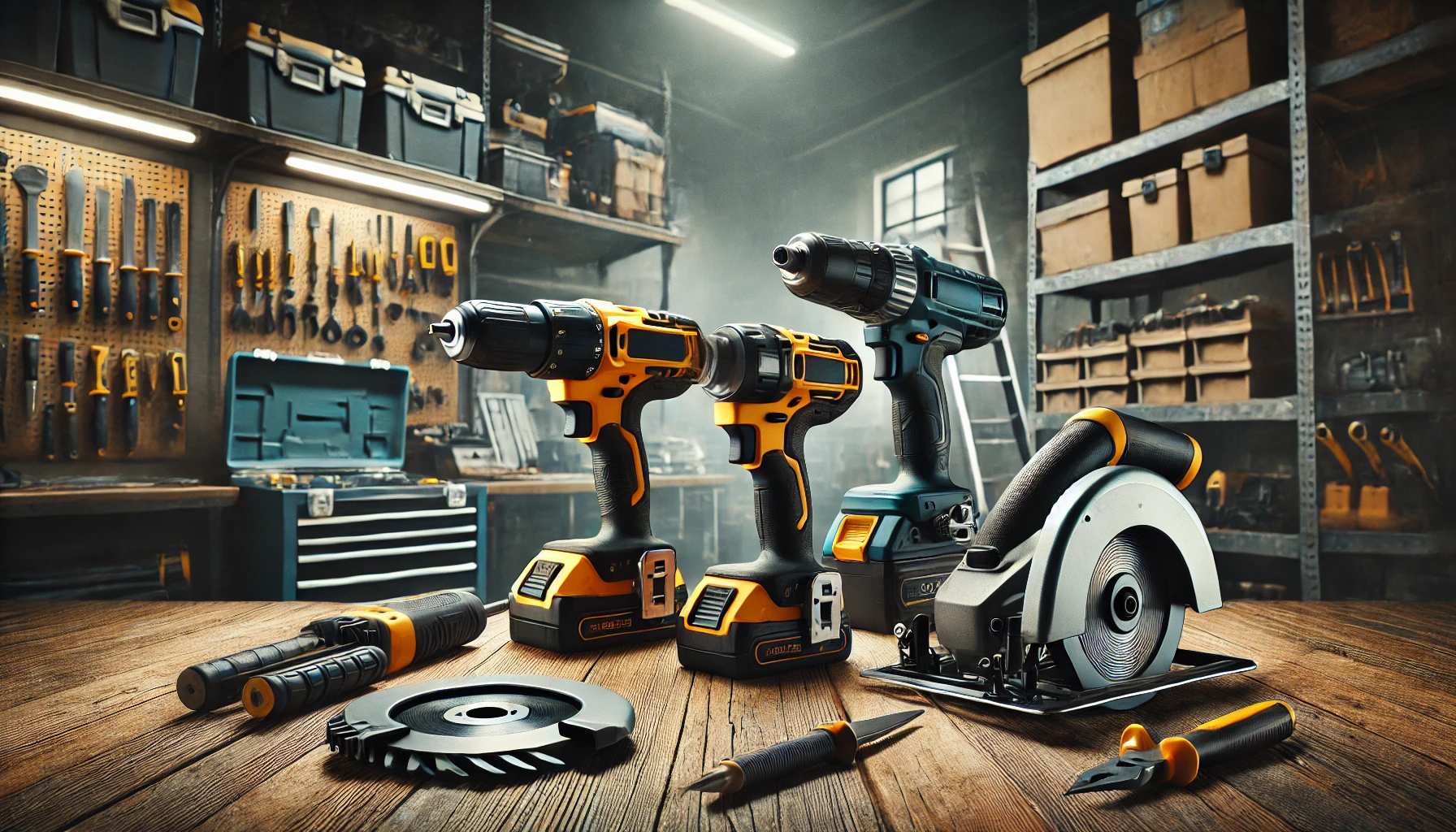Power tools are vital for safety, quality, and smooth workflow for any professional and DIY’er. This guide provides tips for beginners and experts at all levels on choosing the right power tools for specific situations. Understanding the available tools and their applications enables you to make informed selections.
1. Assess Your Project Requirements
Identifying the required tasks is crucial before making any tool purchases. Consider a scenario where one has to drill a hole; for that, the reasonable tool choice would be a drill. Saw blades would be more suited for wood carving of a more intricate nature. Think about how light or heavy your DIY projects are. Lastly, how frequently you intend to use the particular tool can help in targeting areas of desired performance and durability.
2. Understand Power Sources
The difference in power sources is a key category in modern tools classification:
- Corded Power Tools: These devices are constantly powered by an outlet providing consistent energy thereby eliminating concerns with the battery dying. However, mobility is limited and becomes an issue in instances where multiple power outlets are not available.
- Cordless tools: Tools without cords are more portable and flexible since they are operated using rechargeable batteries. Due to improved battery technology, these tools serve a wider array of purposes.
- Pneumatic tools: Often used in the automotive and industrial sectors, pneumatic tools are powered by compressed air. Although they tend to be light, they are powerful but require an air compressor to work.
- Gas powered tools: These tools are ideal for outdoor work such as lawn maintenance. Though they are easily portable, they are not environment-friendly and require high maintenance.
3. Evaluate Tool Specifications
When selecting a power tool, consider the following specifications:
- Voltage and Amperage: While a tool with a high voltage rating may offer more power, it is critical that the voltage aligns with the task s requirements.
- Speed Settings: Variable speed settings enable use on different materials and tasks without restrictions.
- Chuck Size (for Drills): The size of a drill chuck decides the size of drill bits a tool can use. Bigger chucks can withstand extreme conditions.
- Weight and Ergonomics: The form and weight of a tool impact the level of comfort and control when using it.
4. Consider Safety Features
These are the safety features a person should look for while choosing power tools:
- Safety Guards: Shields that obstruct any debris from injuring the user.
- Automatic Shut-off: The function which will turn the tool off automatically when there is a fault or it overheats.
- Ergonomic Handles: Designed to reduce strain and improve grip, enhancing control and comfort.
5. Check Strength and Material Quality
Any tool that you buy will most likely be reliable and perform well if it is well built. A reliable company would include warranties and customer service, as those add relief when making a buy.
6. Determine Battery Compatibility
For power tools with no cords, these points are important:
- Battery Type: Lithium-ion batteries are widely used because they last longer and have less weight.
- Battery Voltage: Powerful battery operates at a higher voltage, however, it might increase the weight and size of the tool.
- Interchangeability: Some companies allow batteries of various tools to be used in each other which makes it handy and cost-effective.
7. Set a Budget
There is a noticeable difference in the prices of power tools. Make sure to set a limit and compare it with the features you seek. Apart from the advanced features and sturdiness offered by high-end brands, there are plenty of dependable brands at more reasonable price caps.
8. Read Reviews and Seek Recommendations
Look out for reviews and ask people with more expertise to gain perspective on the tool. This will provide reasonable assurance about the tool’s performance and reliability in addition to any problems that may arise.
9. Consider Tool Kits
If you expect to perform different tasks that require several tools, you might want to buy a kit. Kits usually come with a variety of tools at a lower price compared to buying the tools separately, which can be cheaper in the long run.
10. Prioritize After-Sales Support
Check whether the manufacturer provides reasonable after sales support in the form of customer care, warranty services, and spare parts. After-sales support is important for the maintenance of the tool’s life and performance.
Conclusion
Finding the right power tool seems easy, but it requires a lot of thought regarding your particular requirements, the details of the job you wish to undertake, and what features will assist you in performing those jobs best. By weighing these considerable factors, the selection of a tool can be made to improve productivity along with safety and satisfaction in the work.










